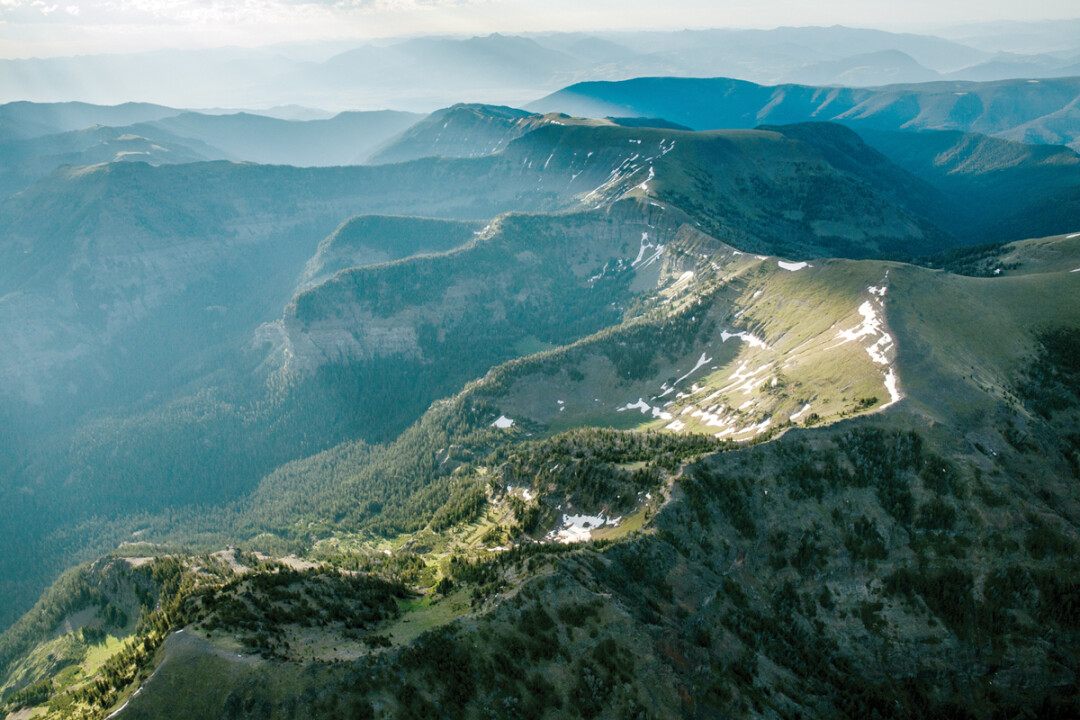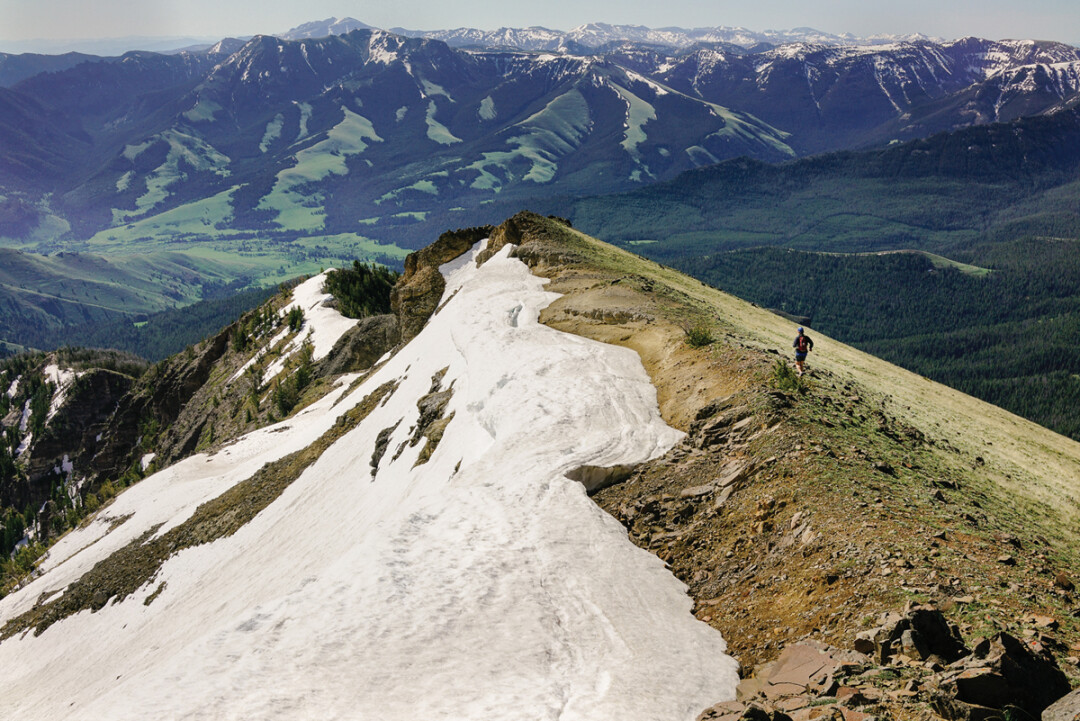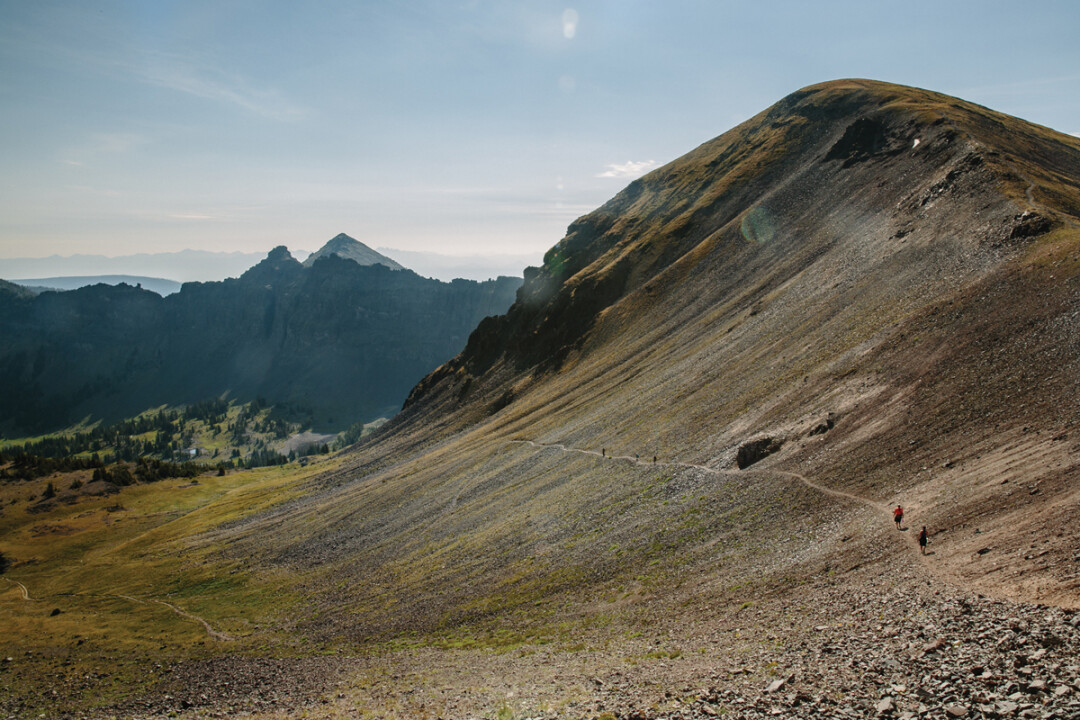Our Wild Backyard: Protecting the Gallatin Range as Southwest Montana Grows
My job for the last 25 years has been to be an advocate for our wild places in a variety of ways. Sometimes it meant taking students into the bear-dominated backcountry of Alaska for the National Outdoor Leadership School, and most recently it means working to protect our local, wild landscapes for The Wilderness Society.
As the Lorax so eloquently reminds us from the stump of his Truffula tree, “Unless someone like you cares a whole awful lot, nothing is going to get better. It’s not.” That ‘caring for something a whole awful lot’ feeling has driven me to give back – to preserve – something that has given me so much: our public lands.

Sometimes, I don’t agree with solutions my neighbors propose for protecting those special places, those places that make us care a whole awful lot. However, as a dear friend who runs a timber mill in Seeley Lake once told me, “In Montana, you can get all of these diverse people together and look at what you don’t agree on, and then set it aside. And then you can focus on what you DO agree on.”
I advocate for wild places. One such place is the Gallatin Range…right out our backdoor.
The Gallatin Range is the backyard to the growing communities of Bozeman, Big Sky, Livingston and Gardiner. A place so familiar as the setting for our after work runs and bike rides or the quick overnight camping trip. We often forget how wild and unique it is. How rare and fragile.
From the South Cottonwood trailhead, we can hike deep into Yellowstone National Park without crossing a road until reaching the road to Madison Junction. At the beginning of the hike, we share this popular trail with mountain bikers, runners, dogs and other hikers – all shapes of nature lovers enjoying the freedom that comes with access to public lands.

Depending on the route we choose or the season we head out in, we might also see folks riding dirt bikes or hunters scanning the hillsides for elk. We could encounter a grizzly bear pretty much anywhere as well as elk, a mountain lion or even a wolf. All that diversity and wildness originates from a trailhead that is a twenty-minute drive from downtown Bozeman. Very few towns can boast of such an experience so close to home.
Now consider these statistics: between 2000 and 2014, Gallatin County grew by almost 40% adding over 25,000 new residents. Many of these new residents (as well as those of us who’ve lived here longer) settled here precisely because of places like the Gallatin Range, where we can slip away for a readily accessible outdoor adventure, whether it is for a few hours or several days.
And clearly, locals and tourists alike are enjoying our backyard national forest. Every five to ten years the US Forest Service conducts a visitor use survey. Data collected between 2005 and 2009 estimates that 1.7 million people visited the Gallatin National Forest per year. By 2014, that number jumped to 3.1 million people recreating on the Gallatin Forest over the course of a year.
While these numbers seem abstract, we see them every day in our wild backyards. More and more people head up Hyalite - summer and winter - in search of outdoor adventure. From the Bridgers to the Gallatin and Madison Ranges, we run into more people in the places where we once found solitude.
This isn’t necessarily a bad thing. When more people feel a personal connection to public lands, they get involved and act to protect these national treasures. By caring about a place a whole awful lot, they become advocates.
And yet, as southwest Montana attracts more people, we have to acknowledge we are putting more and more pressure on our wild lands, clean water and wildlife. We run the risk of “loving the place to death.”
So what is the balance? How do we retain the special qualities like clean water to cast for trout, wild lands to hunt elk, or uncrowded trails to spin our mountain bike wheels?
At The Wilderness Society, we work across the country to protect special places like the Gallatin Range as part of big, connected landscapes that give both wildlife and people room to roam. Protecting and connecting wild public lands is our best hope for conserving our unique natural heritage in the face of the growth we are experiencing here in southwest Montana.
When it comes to the Gallatin Range, we have a once-in-a-generation opportunity to shape the future of our backyard national forest and ensure the next generations can enjoy the same outdoor experiences we do today.
The Custer Gallatin National Forest is revising its 30-year-old forest plan; this is the document which guides how the Forest Service will manage the forest for the next 15+ years and where multiple uses are allowed to occur. As part of the planning process, the Forest Service will identify and evaluate lands that perhaps one day might be designated as Wilderness.
The heart of the Gallatin Range was designated by Congress as the Hyalite-Porcupine-Buffalo Horn Wilderness Study Area, and has been at the center of a local debate over new wilderness designations for decades. As outdoor recreationists fight over whose sport has more impact on the trails, we miss the bigger picture things at stake: clean water, abundant wildlife, opportunities to get away from the harried town life and lose ourselves in untrammeled wild nature. We lose sight of the fact that we all love the Gallatin Range.
With the forest plan revision, our generation of outdoor enthusiasts has a chance to step up and put aside old conflicts, so we don’t lose what is special about the Gallatin Range to crowds, lost access, eroded trails and degraded wildlife habitat. This is OUR opportunity to set aside our differences and focus on where our commonalities lie. Let’s start there.
At least once each summer, I make my way up to Windy Pass in the heart of the Gallatin Range. This familiar vista is bookmarked on both sides by major state highways taking tourists to Yellowstone National Park. Yet I can’t see or hear any of that noise and bustle from Windy Pass. To me, that is the essence of wilderness: a landscape so big that it swallows the footprint of human development, surrounding us in nature, and teaching us the humility that comes from not being able to control everything. It’s a place that inspires me, moves me to act on its behalf, to advocate that it should be kept the way it is today.
We all can have a voice in how our backyard national forest is managed. Right now, planning for the next 15 years of Custer Gallatin National Forest is underway. Attend a local meeting. Submit a comment. And talk to your neighbors. Focus on what we all love about our backyard national forest…what we all agree upon. Visit http://bit.ly/gallatinrange…and become an advocate for the places you love.
Barb Cestero has lived in the Greater Yellowstone region for over 25 years and currently works for the Wilderness Society in Bozeman. She spends much of her free time enjoying the Custer Gallatin National Forest on foot or skis with her dog Pepper.